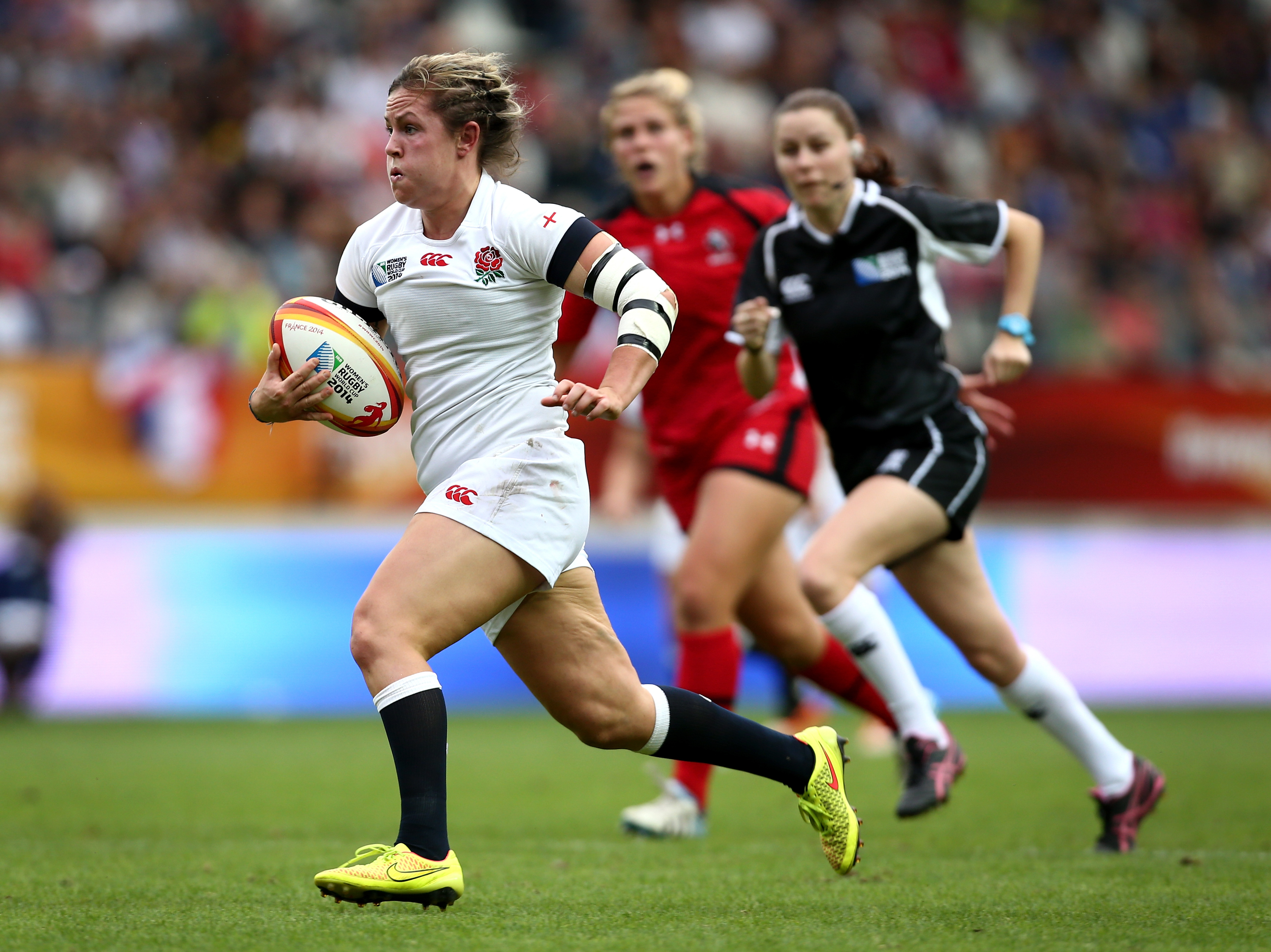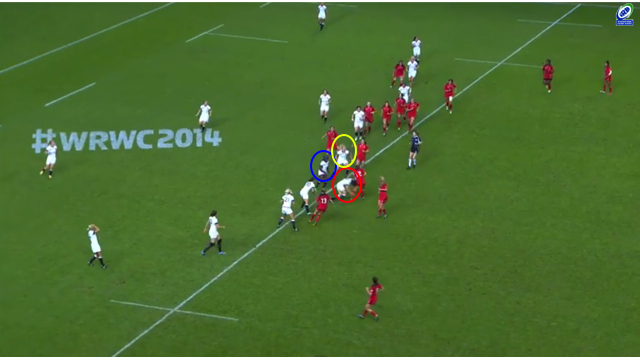Tries from Waterman and Scarratt helped England secure their World Cup final win, but this analysis shows that the back row played a crucial part
Kaino-McCaw-Read, Burger-Smith-Roussow, Hill-Back-Dallaglio – the names of World Cup-winning back-row trios roll off the tongue and evoke vivid memories. Often, loose forwards are such a prominent part of their side’s success that they become synonymous with the tournament as a whole.
Precisely the same has been true of England Women’s campaign in Paris, except the depth of Gary Street’s squad meant five figures came to the fore. Despite being a central part of her nation’s progress over the past five years, powerful Heather Fisher did not even make a match-day 22 in the knockout rounds. Young Alexandra Matthews, an exceptional athlete, had to make do with a bench spot for the final, even following an accomplished outing against Ireland.
Bustling blindside Marlie Packer ended the tournament as the champions’ joint top try-scorer with four, personifying tenacity. Maggie Alphonsi was relentless and saved her considerable best for the clash with Canada. All evening she tore into the eye-line of opposition attackers with break-neck speed – team statisticians are probably still totting up her tackle count.
Lastly, we have the tireless Sarah Hunter. Subtle but outstanding, she has become the lynchpin of Graham Smith’s pack – happy to roll up her sleeves and do the dirty work with exquisite accuracy. In the semi for instance, she was involved in 55 breakdowns. The ball was in play for 37 minutes. That’s a ruck or maul every 40 seconds. Astonishing.
In these two brief clips from Sunday, we see the combined talents of these players in attack and defence, exposing how important they were within England’s all-action approach. First, Danielle Waterman’s opening try:
Pause the video at 1:47
Clearly, this is a spectacular score – more impressive given the high stakes situation. But it’s the subtle skills that lay the foundations. As Alphonsi (circled in blue) and Packer (circled in yellow) help recycle the ball close to the right touchline, England set up their attacking structure.
 Runners are organized around the side’s key distributor, centre Rachael Burford (circled in white), who chooses to hit lock Tamara Taylor in the front wave. Notice Hunter, highlighted by the red circle, is offering an out-the-back option as a link to the wider backs. However, as soon as Taylor receives the ball from Burford, she consciously changes tack to follow-up the carrier.
Runners are organized around the side’s key distributor, centre Rachael Burford (circled in white), who chooses to hit lock Tamara Taylor in the front wave. Notice Hunter, highlighted by the red circle, is offering an out-the-back option as a link to the wider backs. However, as soon as Taylor receives the ball from Burford, she consciously changes tack to follow-up the carrier.
A low tackle from Canada’s Andrea Burke gives her fly-half Emily Belchos a sniff of a turnover, but Hunter is quick and robust on the clear-out.
Indeed, the breakdown is over so quickly that prop Rochelle Clark (circled in white) plays scrum-half and whips a pass away before Burke can recover her feet and compete for possession. Because the ruck lasts approximately two and a half seconds, England can stretch a disorganised Canadian line on the left – thanks largely to Hunter’s support-play. After Emily Scarratt, Kay Wilson and Katy Mclean make inroads, the ball comes back right, where we see the back row in action once more.
Confronted with a ragged defensive line, England capitalise on a glaring overlap clinically – and every role is vital. First, Vicky Fleetwood identifies the space and shifts to Hunter (red circle). Canada’s Belchos (black circle) rushes up in a last-gasp attempt to derail the move, but Hunter remains calm and takes advantage of the glaring dog-leg.
Though Taylor’s show-and-go is a fine piece of composed decision-making, Hunter’s pass is the clincher. With Alphonsi and strike-runner Packer (blue and yellow circles) holding their width to encourage the isolated Canadian defender onto a drift, Taylor’s role of dummying and then releasing her openside flanker is actually more straightforward than it looks.
Straightening up slightly, Alphonsi then commits Julianne Zussman – also ensuring the full-back is blocked off – and times a scoring pass to Waterman perfectly. There is nothing particularly flashy about these skills. They are just basics performed immaculately well. And the trend continues without possession, as this clip of the very last play demonstrates.
Even with 80 minutes gone and the contest well won, the fundamentals of England’s rock-solid defence remain intact. Eventually, such discipline allows the back row to force a turnover.
Unsurprisingly, workhorses Hunter and Alphonsi (red and blue circles) are leading the line as they did magnificently all game. Matthews (yellow circle) has replaced Packer by this point, and all three continue to press even when the ball has gone past them – a crucial component of any defensive pattern, but also something that is very easy to get lazy and neglect.
Their industry off the ball is rewarded and Canada’s Burke meets an aggressive line on cutting back. Hunter intercepts and affects the tackle, while Matthews envelops the carrier and holds the ball above the ground. Leaching onto Matthews in turn, Alphonsi forms a maul.
Despite the support of several team-mates, a copybook choke tackle results. Matthews stands firm, Alphonsi causes mayhem by fighting through bodies and Hunter gets to her feet before diving back onto the ball as the maul collapses. As you can see in the top right-hand corner of the above screenshot, referee Amy Perrett has made up her mind to award a scrum to England, thereby ending the game.
Of course these two clips represent a tiny fraction of how well Street’s charges operated. Packer’s break in the early stages defined her rumbustious tournament. Alphonsi resembled a homing missile all evening, disrupting Canada on numerous occasions. Hunter was a pillar of consistency, as she always is. Then Matthews made an impact.
Though Emily Scarratt is a sparkling individual, England’s World Cup win was a triumph founded on collective effort and cohesion. Their brilliant back-row epitomised that.














